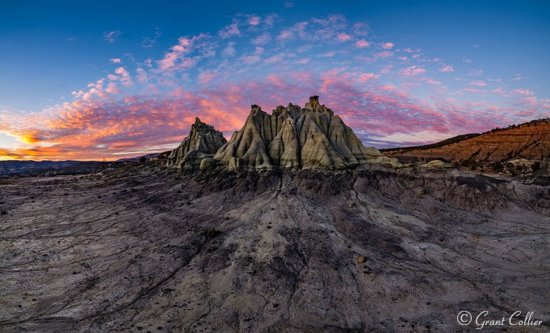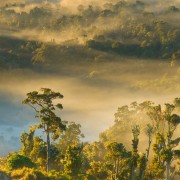Effective Landscape Photography Tips for any Light
At some point, every landscape photographer has probably taken a trip to an exotic location, only to be disappointed when the great lighting they envisioned never materialized. Although this can be frustrating, I believe you can come away with good images under virtually any lighting conditions. The key is to be flexible with the subject matter that you choose to shoot. I’ll briefly go over how I approach landscape photography under different lighting conditions.
Overcast Skies
It can be difficult to capture big, dramatic landscape images under overcast skies. You won’t get the warm, vibrant light at sunrise or sunset, and you won’t be able to shoot the stars at night. However, this can be a good time to capture close-up or macro photography. You will have soft, even light, without any harsh shadows.
This can also be a good time to take aerial shots from a drone while pointing the camera straight down. These landscape photos are similar to close-up shots but on a much larger scale. You will generally want to focus on patterns in the land and avoid including the sky in your image.
Although images like these can be taken throughout the day, I usually take them after sunrise or before sunset, when the sun is low in the sky. Even under overcast skies, the lighting is a little softer and less harsh during this time. Also, there’s always the chance that the clouds will break up and a dramatic sunrise or sunset will be visible.
Partly Cloudy
Partly cloudy skies can offer some incredible opportunities for landscape photography. The clouds can come alive with color at sunrise and sunset, adding much beauty to the scene.
Sometimes, the clouds may block the best light during the golden hour. However, as long as there is enough clearing on the horizon for some sunlight to peek through, there should be some good light.
It can also be good to shoot under partly cloudy skies at night. Since you’ll be taking long exposures, the clouds will usually move across the sky during your shot. This blurs the clouds, sometimes creating dramatic effects. You should also be able to capture plenty of stars in between the clouds.
Stormy Weather
While many tourists opt to stay inside during stormy conditions, this weather is often the best weather for landscape photographers. Storms can produce very dramatic clouds, sometimes leading to amazing landscape photos.
You can occasionally capture lightning or rainbows during stormy weather. Rainbows often appear when a storm is starting to clear and the sun first comes back out. They always appear in the opposite direction of the sky from the sun.
Fog
Foggy weather can also be great for landscape photography, adding mood and depth to a photograph. If the weather forecast calls for an upslope flow of air along a steep mountain or hill, you often find dramatic low-lying clouds or fog at that location. Fog can also be commonly seen along some coastlines or during winter snowstorms.
If you’re immersed within the fog, it can be a good time to shoot close, intimate landscape photos. If you’re below or above the fog, it can be a good time to shoot big landscapes.
Clear Skies
It can be difficult to capture great images under perfectly clear skies during the day. You get warm, golden light just after sunrise and just before sunset. However, without any interesting clouds in the sky, it can be challenging to capture a stunning photograph.
Fortunately, if you’re willing to stay up well into the night, clear skies can be a blessing. You can be sure that thousands of stars will be visible when it gets dark, and you will get an unobstructed view of the Milky Way. I sometimes take a few shots at sunset when there are clear skies, but my main goal is to stay out for Milky Way or night photography.
Sometimes, if you need sunlight to penetrate deep down into a scene, it can be best to shoot under clear skies when the sun is high in the sky. Examples of this include slot canyons, thick forests, and underwater or over/under water images. Another option under clear skies is to shoot in the shade or use a diffuser to capture close-up or macro photos, just like you can do under overcast skies.
If you keep these tips in mind whenever you’re out shooting, you should be able to come away with breathtaking landscape photos regardless of what Mother Nature throws at you.

 Grant Collier
Grant Collier















